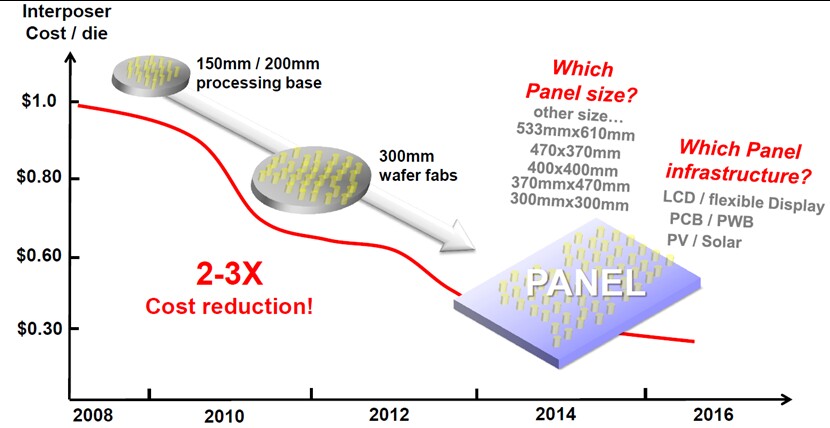This is interesting, Sony really likes their in-house interposer technology 
http://www.sony.net/Products/SC-HP/cx_news/vol57/pdf/sideview57.pdf
http://www.sony.net/Products/SC-HP/cx_news/vol57/pdf/sideview57.pdf
Follow along with the video below to see how to install our site as a web app on your home screen.
Note: This feature may not be available in some browsers.
So, a Kepler review leaked, and I think pitcairn vs Kepler you'd much rather have Kepler in a console.
no it's 256bit, which makes it greatly bandwith efficient. or they've made a great memory controller which can drive the gddr5 at high speeds.
not sure it would really fit in even an high end console very well, if we look at the alienware console-like PC they put a low midrange GPU in it.
From what I have seen there are the rated TDPs and the actual. The Pro model Pitcairn (some measure load TDP closer to 105W or so) is really low while Kepler I have read has gone over the rated TDP in the 200W range. Also, there is the issue of the memory interface as Kepler, correct me if I am wrong, is a 384bit? So bigger, almost 2x real TDP (???) between some models, and a much larger bus. I guess we will know a lot more shortly--will be interesting. The Kepler stats I saw showed 8x MSAA tests only which raises an eyebrow.
You forgot the cryogenic liquid nitrogen cooling solution so that these boxes don't immediately set fire to your house.sorry for being late to the party eventhough I begin reading this interesting thread since a long time ago, anyway this is my prediction (I will play it safe this time lol and return after with a more innovative predictions ) :
for the next xbox :
Microsoft this time will play it safe, not very expensive hardware, but very efficient, the console will be FULLY backward compatibe with every xbox360 and xboxlive games and applications + new kinect HD accessory that will be sold separately.
release date : december 2013
processor : a not very modified IBM power 7, 6 cores (dual threaded), 3.4 ghz
RAM : unified 3 GO of GDDR5 ram, 120 GO/s
GPU : VERY modified AMD 7000 series directx 11 GPU, with 2 teraflops processing power + 64 mo of edram at 600 go/s.
optical drive : blu ray, 6x
hard drive : it depends on the model, 500 GO, 750 GO or 1 TO.
Price : 499 $ without kinect HD, and 599 $ with kinect HD bundled.
For PS4 :
ps4 will be more powerful than next xbox, it will be released later on, almost 1.5 times more powerful. PS4 will be backwards compatible with all playstations before it (ps1, 2, 3) and all sony playstation network applications. Maybe some new accessory will sold deparately to fight kinect HD.
Release date : september-october 2014
processor : a VERY modified IBM power 8, 8 cores (quad threaded), 3.8 ghz, that could easily emulate the CELL.
RAM : unified 4 GO of GDDR5 ram, 160 GO/s
GPU : VERY modified AMD 8000 series directx 11 GPU, with 4 teraflops processing power but no edram.
16 GO of flash memory serving as a cash and also to install a difficult to hack upgradable operating system via internet.
optical drive : blu ray, 8x
hard drive : it depends on the model, 500 GO, 750 GO, 1 TO, or 2 TO.
Price : 499 $
So, a Kepler review leaked, and I think pitcairn vs Kepler you'd much rather have Kepler in a console.
Looks like Sony jumped off the Nvidia bandwagon at exactly the wrong time. I expect a slew of "Sony is back with Nvidia!" unsourced rumors to pop upThen before you know it it'll be accepted message board fact again...just like AMD in Sony became without any sources.
Can anyone make an educated guesstimate to the mass production cost, both monetary and area/power and board bus, of the following:
(3) An interposer (65nm or 90nm?) large enough for a 220mm^2 GPU and 1 - 2 DRAMs (512MB-1GB). What is the cost of a 350mm^2 interposer? What kind of speed could be project from such? What power and board complexity savings, if any, could be expected?

Straight usage of legacy code would be right out.
With binary translation, it may be possible for games that don't push PPE and the SPEs hard (or use SPEs at all) to run on a different architecture. This depends on Sony caring enough to spend resources on a solution like that.
Anything that really depends on quirks in the PS3 or drives any system component very hard probably won't.
This may rule out anything but the earliest or least demanding games.
This graph is based on a 300mm interposer
175W on graphics alone in a console? Perhaps sadly, but that's not going to happen.
You forgot the cryogenic liquid nitrogen cooling solution so that these boxes don't immediately set fire to your house.
